Looking for a yarn?

100% gyapjú
minimum 1500.00 Ft /50g
Rendelés Kötőtűk & Horgolótűk
Ha a RENDELÉS gombra kattint a Nordfonal.hu oldalára irányítjuk át
A fonalköltséget a minta legkisebb méretéhez, és a legolcsóbb fonalból számoljuk. Még jobb árat keres? Itt megtalálhatja: DROPS Deals!
Snuggly Bunny
Kötött babazsák, rizs-, struktúra- és csavartmintával DROPS Merino Extra fine fonalból. DROPS design: me-042-by jelű minta
Méret: 1/3 - 6/9 - 12/2 - 3/4 éveseknek.
A méret cm-ben: 50/56 - 62/68 - 74/80 (86/92 - -98/104)
Alapanyagok: DROPS MERINO EXTRA FINE a Garnstudiótól
450-500-550 (650-700) gramm a 01 sz. törtfehér színből
DROPS KÖRKÖTŐTŰ (60 és 80 cm hosszú) 4 mm-es - vagy olyan vastagságú, amellyel 21 szem X 28 sor = 10 X 10 cm harisnyakötéses (színén sima, fonákoldalán fordított) próbadarabot tudunk készíteni.
DROPS FAGOMBOK, világos 511 számú: 10-10-10 (12-12) darab
-------------------------------------------------------
Választható más fonalak – Nézze meg hogyan helyettesítheti be a fonalat ITT.
A_F fonalcsoportok – Használja ugyanazt a mintát és helyettesítse be a fonalat ITT.
Fonalhasználat más, behelyettesített fonalnál – Hazsnálja a fonalátváltónkat.
-------------------------------------------------------

100% gyapjú
minimum 1500.00 Ft /50g
Rendelés Kötőtűk & Horgolótűk
Ha a RENDELÉS gombra kattint a Nordfonal.hu oldalára irányítjuk át
A fonalköltséget a minta legkisebb méretéhez, és a legolcsóbb fonalból számoljuk. Még jobb árat keres? Itt megtalálhatja: DROPS Deals!
- Magyar
- Česky
- Dansk
- Deutsch
- Eesti keel
- English (UK/cm)
- English (US/in)
- Español
- Français
- Íslenska
- Italiano
- Nederlands
- Norsk
- Polski
- Português
- Suomi
- Svenska
- English (UK/cm), Bulgaria
- English (UK/cm), Croatia
- English (UK/cm), Greece
- English (UK/cm), Latvia
- English (UK/cm), Lithuania
- English (UK/cm), Romania
- English (UK/cm), Slovenia
- Česky, Slovakia
Mintaleírás
LUSTAKÖTÉS (a kötőtűn oda-vissza):
Minden sorban sima szemekkel kötünk.
MINTA:
Lásd az M.1- M.3-as diagramot A diagram a mintát a színe oldal felől mutatja. Az M.2 és M.3 jelű minta 1. sora = SZOO.
LYUK AZ AUTÓS GYERMEKÜLÉS BIZTONSÁGI ÖVÉHEZ:
A babazsákot készíthetjük az elején és a hátán lyukkal a biztonsági öv átvezetéséhez. Az első lyukat a darab hátán akkor készítjük, amikor az körülbelül 16-20-23 (28-33) cm.es (vagy a kívánt méretű), a tűn levő szemek közül a középső 10-et leláncolva. A következő sorban szedjünk fel 10 új szemet a leláncolt szemek fölött, és a korábbiaknak megfelelően folytassuk a munkát.
GOMBLYUKAK:
A gomblyukakat a jobboldali gomboláspánton készítjük el. 1 gomblyuk= kössük össze a 2. és a 3. szemet az eleje közepénél, majd 1RH.
A gomblyukakat akkor készítsük, amikor a darabunk:
1/3 hónapos méretnél: 25, 30, 35, 40, 45 és 50 cm.
6/9 hónapos méretnél: 28, 34, 41, 47, 54 és 60 cm.
12/18 hónapos méretnél: 30, 38, 46, 54, 62 és 70 cm.
2 éveseknek való méretnél: 37, 44, 51, 58, 65, 72 és 79 cm:
A 3/4 éveseknek való méretnél: 40, 48, 57, 65, 74, 82 és 91 cm:
--------------------------------------------------------
--------------------------------------------------------
BABAZSÁK:
A babazsákot 2 részben készítjük, az alsó szélétől, felfelé haladva varrjuk össze. Mindkét részt oda-vissza kötjük körkötőtűn, hogy legyen elég hely a szemeknek.
MEGJEGYZÉS: Ha szükség van lyukra a biztonsági öv elvezetésére- olvassuk el a fenti magyarázatot.
HÁTA:
A kezdéshez szedjünk fel 68-74-82 (86-94) szemet (ebben benne van mindkét oldalon 1 szélszem) a 4 mm vastag körkötőtűre a Merino Extra Fine fonallal. Kössünk lustakötéssel (olvassuk el a fenti magyarázatot) 4-4-4 (5-5) cm-ig, úgy, higy FO sor után fejezzük be. Kössünk 1 sort a FO felől, majd folyt az M.1 jelű mintával, és mindkét oldalon 1-1 lustakötéses szélszemmel (aszélszem mellett 1 S szemmel kezdünk). Amikor a darabunk 44-53-62 (71-82) cm, az ujjához új szemeket szedünk fel, mindkét oldalon, a köv. módon: Minden sor végén szedjünk fel szemeket a köv módon: 4 szemet 2-2-3 (3-3) alkalommal, 8 szemet 1-1-1 (1-3) alkalommal, 10 szemet 1-1-1 (2-1) alkalommal, 12-14-15 (15-16) szemet 1 alkalommal = 144-154-172 (196-218) szemünk lesz a kötőtűn. MEGJEGYZÉS: Az új szemeket az M.1 jelű mintába illesztve kötjük tovább. Amikor minden szemet felszedtünk, az M.1 jelű mintával folyt a kötést, de mindkét oldalon a szélső 10 szemet lustakötéssel kötjük (= az ujjak alsó szegélye). Amikor a darabunk 54-64-74 (84-96) cm-es láncoljuk le a középső 16-16-18-22 (24-24) szemet a nyakkivágás kialakításához és a két vállrészt / ujját külön-külön fejezzük be. Láncoljunk le 1 szemet a nyakkivágás kialakításához a köv sorban = 63-67-74 (85-96) szem marad a sorban (= vállrész + ujja). Amikor a darabunk 56-66-76 (86-98) cm-es, láncoljuk le a darabot. ismételjük meg a másik oldalon.
ELEJE:
A kezdéshez szedjünk fel 68-74-8286-94 szemet a kötőtűre. Kössünk lustakötéssel 2-2-2 (2.5-2.5) cm-t. A következő színe oldali sorban így kössünk: 12-13-14 (14-16) S szem, *2 szemet S összekötünk, 1 rh, 12-13-15 (12-13) S szem. * Ism a *-* közötti részt, összesen 3-3-3 (4-4) alkalommal, 2 szemet S összekötünk, 1 rh, és 12-14-15 (14-16) szemmel fejezzük be a sort (= 4-4-4 (5-5) gomblyuk). Folytassuk lustakötéssel, amíg a darabunk körülbelül 4-4-4 (5-5) cm-es, és 1 FO sor után járunk. Kössünk 1 sort fordított szemekkel a fonákoldal felől, miközben, UGYANAKKOR, egyenletesen elosztva fogyasszunk 22 szemet (minden méretben) = 90-96-104 (108-116) szem marad a kötőtűn. A következő SZO sorban így haladjunk: 1 szélszem, az M.1 jelű minta az első 5-8-12 (14-18) szemen (az oldalán 1 S szemmel kezdjünk, így illeszkedik majd a háta mintájához), az M.2 jelű minta (= 32 szem), 14 F szem, az M.3 jelű minta (= 32 szem), az M.1 jelű minta a következő 5-8-12 (14-18) szemen (a mintát úgy kössük, hogy az oldalán a szélszem mellett 1 F szemet kössünk, így illeszkedik majd a háta mintájához, és 1 szélszemmel fejezzük be. Amikor a darabunk 23-25-28 (33-37) cm-es, csúsztassuk az első 42-45-49 (51-55) szemet 1 szemtartóra = 48-51-55 (57-61) szem marad a kötőtűn.
JOBB ELEJE:
= 48-51-55 (57-61) szem. Folytassuk a mintával a korábbiaknak megfelelően, de az eleje közepén 6 szemen lustakörtéssel kötünk - NE FELEDKEZZÜNK MEG A GOMBLYUKAKRÓL- olvassuk el a fenti magyarázatot. Amikor a darabunk 44-53-62 (71-82) cm-es, minden sor végén szedjünk fel új szemeket az ujjához, ahogy azt a hátánál tettük = 86-91-100 (112-123) szem. Miután minden szemet felszedtünk, folytassuk a mintával a korábbiaknak megfelelően, de az ujja szélén a 10 szélső szemet lustakötéssel kötjük. Amikor 1 sor kell ahhoz, hogy a darabunk 51-61-71 (80-92) cm -es legyen (ez a sor legyen FO sor), az eleje közepénél a csav mintán fogy 4 szemet (vagyis fogy 2 szemet a csav mintán, és 1-1 szemet a csav minta mindkét oldalán. A következő színe oldali sorban először lekötjük az első 6-7-8 (9-9) szemet, majd szemtartóra csúsztatjuk őket a nyakkivágáshoz. A nyakkivágás kialakításához minden sor elején a köv módon láncoljunk le szemeket: 2 szemet 2 alkalommal, majd 1 szemet 2-2-3 (3-3) alkalommal= 70-74-81 (92-103) szem marad a sorban a vállrészhez és az ujjához. Folytassuk a mintával a korábbiaknak megfelelően. Amikor 1 sor kell ahhoz, hogy a darabunk 56-66-76 (86-98) cm-es legyen, egyenletesen elosztva fogyasszunk 7 szemet az M.3 jelű mintán = 63-67-74 (85-96) szem marad a kötőtűn. A köv sorban lazán láncoljuk le a megmaradt szemeket.
BAL ELEJE:
Csúsztassuk a szemtartóra félretett szemeket vissza a kötőtűre, és szedjünk fel 6 szemet a jobb gomb pánt 6 lustakötéses szeme mögött = 48-51-55 (57-61) szem. Folytassuk a jobb elejénél eírt módon, de annak tükörképeként. MEGJEGYZÉS: az eleje pánton nem készítünk gomblyukakat.
ÖSSZEÁLLÍTÁS:
Varrjuk össze a vállvarrásokat, és az ujjak varrásait. Varrjuk össze az ujjak alsó varrását, és folytassuk az oldalán, az 1 szélszem mellett. Hajtsunk fel 5-5 centit a két ujja alsó szélén, és néhányapró öltéssel r9gzítsük. Varrjunk 4-4-4 (5-5) gombot a zsák alsó szélén. varrjuk a megmaradt gombokat a bal eleje szélére.
KAPUCNI:
A színe oldal felől szedjünk fel körülbelül 58-78 szemet (az elején szemtartóra félretett szemekkel együtt) a 4 mm-es körkötőtűre a Merino Extra Fine fonallal. Kössünk 1 sort S szemekkel a FO felől, majd 1 sort S szemekkel a SZO felől. UGYANAKKOR, egyenletesen elosztva fogy annyi szemet, hogy 85-89-93 (97-101) szem maradjon a kötőtűn. Folytassuk az M.1 jelű mintával, mindkét oldalon 6 lustakötéses szemmel. UGYANAKKOR, a köv 2 sor végén szedjünk fel 6 új szemet a visszahajtott szélhez = 97-101-105 (109-113) szem. Ezeket szemek lustakötéssel kötjük. Folytassuk az M.1 jelű mintával, és 12 lustakötéses szemmel a két oldalon, amíg a kapucni 21-23-25 (27-28) cm-es. Láncoljuk le a szemeket. Hajtsuk félbe a kapucnit, és varrjunk össze a tetején. Hajtsuk a kapucni széle körül a 6 lustakötéses szemet a SZO felé, és apró öltésekkel rögzítsük a nyakkivágáshoz.
Diagram

|
= Sima a színe oldal felől, fordított a fonákoldal felől |

|
= Fordított a színe oldal felől, sima a fonákoldal felől |

|
= Csúsztassunk 3 szemet a segédtűre, tegyük a munka mögé, 3 sima, 3 sima a segédtűről. |

|
= Csúsztassunk 3 szemet a segédtűre, tegyük a munka elé, 3 S, 3 sima a segédtűről. |

|
= Csúsztassunk 2 szemet a segédtűre, tegyük a munka mögé, 2 sima, 2 sima a segédtűről. |

|
= Csúsztassunk 2 szemet a segédtűre, tegyük a munka elé, 2 S, 3 sima a segédtűről. |
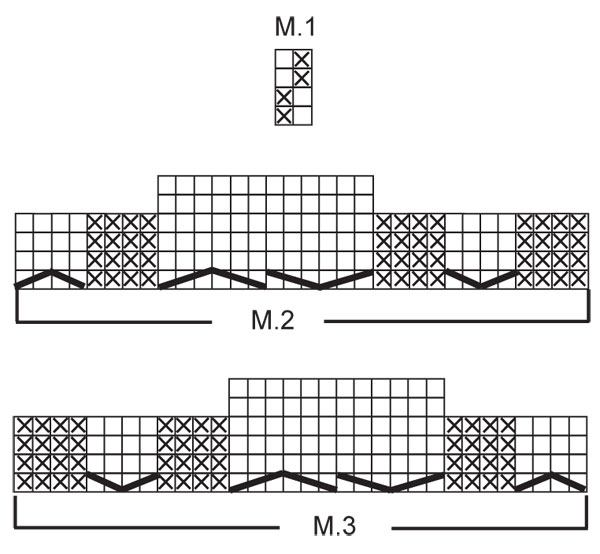

Minden mintánkhoz tartoznak oktató-videók, amik segítenek.
These step-by-step tutorials might also help you:
Miért olyan fontos a kötés/horgoláspróba betartása?
A kötéspróba határozza meg a munkadarabunk végső méretét, általában 10 x 10 cm-ben mérjük. A következő módon adjuk meg: A szemek száma egymás mellett x a sorok száma egymás fölött- vagyis: 19 szem x 26 sor = 10 x 10 cm.
A kötés/horgoláspróba mindenkinél egyéni: egyesek lazábban dolgoznak, mások szorosabban. A kötéspróbán a kötő/horgolótű méretének változtatásával tudunk igazítani, ezért van az, hogy a javasolt tűméretet csak ajánlásnak szánjuk! A kötő/horgolótű méretének ellenőrzésével, esetleges cseréjével tudjuk biztosítani, hogy a SAJÁT kötéspróbánk megfeleljen a mintában megadottnak. Ha a mintában megadott kötés/horgoláspróbától eltérünk, a felhasznált fonalmennyisége változhat, és a kész darabunk mérete is eltérő lesz a mint a mintában megadott.
Honnan tudom, hány gombolyag fonalra lesz szükségem?
A szükséges fonalmennyiséget grammban adjuk meg, például: 450 gramm. Ahhoz, hogy ki tudjuk számolni, hány gombolyagra lesz szükségünk, tudnunk kell hány gramm fonal van egy-egy gombolyagban (ez általában 25 gramm, 50 gramm vagy 100 gramm). Ezt az adatot megtudhatjuk, ha az oldalainkon az adott fonaltípusra kattintunk. A minta elkészítéséhez szükséges fonalmennyiséget osszuk el az egy-egy gombolyagban található fonalmennyiségével, Például, ha egy gombolyagban 50 gramm fonal van, akkor így számolunk: 450/50 = 9, vagyis 9 gombolyagra lesz szükségünk.
Használhatok a mintában megadottól eltérő fonalat?
Amikor egy adott fonalat egy másikra cserélünk az a legfontosabb, hogy a kötés/horgoláspróba ugyanaz maradjon, így az elkészült darabunk mérete akkora lesz, mint a mintában található mintarajz méretei. Könnyebben tarthatjuk be a megadott kötés/horgoláspróbát, ha ugyanabból a fonalcsoportból használunk másik fonalat. Egy vastagabb fonal kötéspróbáját több szál, vékonyabb fonal összefogásával is elérhetjük. . Kérjük, próbálja ki a fonal-átváltónkat.r.Javasoljuk hogy mindig készítsen próbadarabot!.
Kérjük, ne feledje: mivel minden fonalunk más-más tulajdonságú, fonalváltásnál előfordulhat, hogy az elkészült darab a fotón látottól eltérő lesz.
Fonalcsoportok - Mik ezek, és hogyan használjuk őket?
A fonalakat vastagságuk, és a velük elérhető kötéspróba szerint csoportokba rendeztük, így könnyebben találhat mintát a kedvenc fonalához. Vagy könnyebben találhat egy mintához fonal-alternatívákat. Az ugyanabban a fonalcsoportban levő fonalak hasonló kötéspróbát adnak, így egymással behelyettesíthetőek. Azonban, ettől függetlenül a minőségük, a struktúrájuk eltérő, így az elkészült darab különleges és egyedi lesz. Az egyes fonalcsoportok áttekintéséhez kattintson ide!.
A fonalcsoport = a csoporton belül minden fonallal 26 -23 szemet tudunk 10 cm-en kötni.
B fonalcsoport = a csoporton belül minden fonallal 22 -20 szemet tudunk 10 cm-en kötni.
C fonalcsoport = a csoporton belül minden fonallal 19 -16 szemet tudunk 10 cm-en kötni.
D fonalcsoport = a csoporton belül minden fonallal 15 -12 szemet tudunk 10 cm-en kötni.
E fonalcsoport = a csoporton belül minden fonallal 11 -9 szemet tudunk 10 cm-en kötni.
E fonalcsoport = a csoporton belül minden fonallal 8 -5,5 szemet tudunk 10 cm-en kötni.
Amennyiben több szál fonalat összefogva szeretne dolgozni, ehhez a következőket érdemes tudni: A C fonalcsoport 1 szálával hasonló kötéspróbát tudunk készíteni, mint az A. fonalcsoport 2 szálát összefogva, Az A fonalcsoportból tehát bármely fonalból 2 szálat, vagy bármely 2 fonalból 1-1 szálat összefogva megfelel a C fonal 1-1 szálának, ezt a mintákban így jeleztük: A + A = C.
Az alábbiakban áttekintjük, hogyan működnek a fonalaink, ha 1 szálnál többel dolgozunk:
2 szál az A fonalcsoportból megfelel a C fonalcsoport 1 szálának. Ezt a mintában így jeleztük: A + A = C
3 szál az A fonalcsoportból megfelel a D fonalcsoport 1 szálának. Ezt a mintában így jeleztük: A+A+A = D
4 szál az A fonalcsoportból megfelel az E fonalcsoport 1 szálának. Ezt a mintában így jeleztük: A + A+A+A = D
8 szál az A fonalcsoportból megfelel az F fonalcsoport 1 szálának. Ezt a mintában így jeleztük: A+A+A+A +A+A+A+A = F
2 szál az B fonalcsoportból megfelel a D fonalcsoport 1 szálának. Ezt a mintában így jeleztük: B+B =D
2 szál a C fonalcsoportból megfelel az E fonalcsoport 1 szálának. Ezt a mintában így jeleztük: C+C = E
4 szál a C fonalcsoportból megfelel az F fonalcsoport 1 szálának. Ezt a mintában így jeleztük: C+C+C+C = F
2 szál az E fonalcsoportból megfelel az F fonalcsoport 1 szálának. Ezt a mintában így jeleztük: E+E= F
A fonalak ilyen cseréjével új minőségeket, új struktúrákat érhetünk el, a választott kombinációktól függően. Kifejlesztettünk egy fonal-kalkulátort, amivel kiszámolhatja, mennyi fonalra van szüksége, ha 1 szál fonal helyett 2 vagy több szál kombinációját választja. A kalkulátorhoz a linket minden minta oldalán megtalálja. Ne feledje, hogy a megadott kötéspróba határozza meg, melyik fonalakat használhatjuk. Feltétlenül készítsünk próbadarabot a választott fonalkombinációval, és ellenőrizzük, hogy be tudjuk-e tartani a megfelelő kötéspróbát.Hogyan használhatom a fonal-átváltót?
Minden mintánk tetején talál linket a fonal-átváltónkhoz, ami segítséget nyújt, ha a mintában megadottól eltérő fonalat szeretne használni. A cserélni kívánt fonalat, a méretünkhöz szükséges fonalmennyiséget és a szálak számát megadva, a fonal átváltó megadja, milyen más, hasonló kötéspróbát adó lehetőségek közül választhat. Azt is megmondja, hogy az új típusból milyen mennyiségre van szükség, és kell-e több szálat használnunk egyszerre. A legtöbb gombolyagunk 50 grammos (némelyik 25 vagy 100 grammos).
Ha a mintában több színt használunk, minden színt külön ki kell számolnunk. Ugyanígy, ha a mintát több, különböző típusú fonalból készítjük (például 1 szál Alpaca és 1 szál Kid Silk fonalból), akkor mindegyikhez külön-külön kell alternatívát keresnünk.
Miért adnak meg már nem gyártott fonalakat egyes mintákban?
Mivel a különböző fonalak tulajdonságai, struktúrája eltér, úgy döntöttünk, hogy a mintáinkban megtartjuk azt az eredeti fonalat, amihez az adott mintát terveztük. Ugyanakkor, a most is elérhető fonalaink között könnyen találhat megfelelő alternatívát, ha a fonal-átváltónkat használja, vagy ugyanabból a fonalcsoportból választ ma is gyártott típust.
Az is előfordulhat, hogy egy-egy kereskedőnél még van a már nem gyártott fonalból készlet, vagy valakinek a saját készleteiben lapul olyan gombolyag, amihez szeretne mintát találni.
The a fonal átváltó segít alternatív fonalat keresni és kiszámolni az új típusból szükséges fonalmennyiséget.
Melyik méretet készítsem?
Ha úgy gondolja, nehéz eldönteni, melyik méretet készítse, jó ötlet, ha megmér egy hasonló típusú, már meglevő, kényelmes darabot, aminek a méretét jónak találja, és ennek a darabnak a méreteit összehasonlítja a diagramon megadott méretekkel.
A rajzot a méretekkel a minták alján találja..
Nézze meg a következő DROPS leckét: Hogyan olvassuk a méretrajzot?
Miért nem kapom meg a megfelelő kötés/horgoláspróbát a javasolt tűmérettel?
A mintákban megadott tűméret csak javaslat, a fontos, hogy a megadott kötés/ horgoláspróbát tartani tudjuk. Mivel mindenki más kötéspróbával dolgozik, előfordulhat, hogy más méretű tűvel kell dolgoznunk, hogy a minta kötés/horgoláspróbáját be tudjuk tartani- akár 1-2 mérettel kisebb vagy nagyobb kötőtűre is szükség lehet, hogy a megfelelő kötés/horgoláspróbát elérjük. Ezért azt tanácsoljuk mindig készítsen próbadarabot.
Ha a mintában megadottól eltérő kötés/horgoláspróbával dolgozik, az elkészült darab méretei eltérhetnek a méretrajzon megadottaktól.
Olvassa el a következő DROPS leckét: Hogyan mérjük a kötés/horgoláspróbát?
Olvassa el a következő DROPS leckét: Hogyan készítsünk próbadarabot a kötéspróba ellenőrzéséhez?
Miért kötünk egyes mintákat fentről lefelé haladva?
Ha egy darabot fentről lefelé haladva készít, lehetősége lesz arra, hogy rugalmasabban kezelje a mintát, és a saját alkatára, méreteire igazítsa. Például könnyebb munka közben felpróbálni a darabot, és a vállrész hosszán változtatni.
A mintaleírások minden lépést elmagyaráznak, a megfelelő sorrendben. A diagramokat a kötés irányénak megfelelően adjuk meg, és a szokásos módon olvassuk őket.
Hogyan kell egy diagram szerint dolgoznom?
A diagram minden sort/kört és minden szemet a színe oldal (SZO) felől nézve mutat jobbról balra. 1 négyzet = 1 szem.
Amikor oda-vissza haladva (síkban) dolgozunk, minden 2. sort a színe oldal felől, minden 2. sort pedig a fonákoldal felől kötünk, ezért a diagramot át kell fordítanunk: balról jobbra haladva olvassuk, a sima szemeket fordított szemekkel kötjük, a fordított szemeket sima szemként, stb.
Amikor körbenhaladva dolgozunk, minden kört a színe oldal felől kötünk, és minden körben jobbról balra haladva dolgozunk.
Olvassuk el a következő DROPS leckét: Hogyan olvassuk a kötésminták diagramjait?
Hogyan dolgozzak egy horgolásminta diagramja alapján?
A diagram minden sort/kört és minden szemet a színe oldal felől ábrázol. Alulról felfelé, jobbról balra haladva olvassuk.
Amikor oda-vissza haladva dolgozunk, minden 2. sort a színe oldal felől készítünk, jobbról balra haladba, és minden 2. sort a fonákoldal feéá, ekkor a diagramot balról jobbra haladva kell olvasnunk.
Amikor körben haladva dolgozunk, a diagramminden sorát a színe oldal felől köjük, a diagramot jobbról balra haladva olvassuk.
Amikor kör alakban dolgozunk, a darab közepén kezdünk, és onnan kifelé haladunk, az óra járásával ellentétes irányban, sorról sorra.
A sorok általában adott számú láncszemmel kezdődnek (a következő szem magasságának megfelelően), ezt vagy belerajzoljuk a diagramba, vagy elmagyarázzuk a mintában.
Olvassuk el a következő DROPS leckét: Hogyan olvassam a horgolási diagramokat?
Hogyan készítek egyszerre zöbb diagramot ugyanabban a sorban / körben?
ha egy körben/ sorban egymás mellett több, különböző diagram mintáját készítjük, a mintaleírásban gyakran ezt látjuk: "kössük az A.1 jelű mintát, A.2, A.3 jelű mintát összesen 0-0-2-3-4 alkalommal." Ez azt jelenti, hogy elkészítjük az A.1 jelű mintát egyszer, majd az A.2 jelű mintát egyszer, az A.3 jelű mintát ismételjük egymás mellett annyiszor, amennyit a minta a méretünkben megad, ebben az esetben: S méretben = 0 alkalommal, M méretben = 0 alkalommal, L méretben = 2 alkalommal, XL méretben = 3 alkalommal és XXL méretben = 4 alkalommal.
A diagramokat a szokásos módon készítjük: Az A.1 jelű minta első sorával kezdünk, utána az A.2 jelű minta első sorát készítjük, stb.
Olvassuk el a következő DROPS leckét: Hogyan olvassam a kötésminta diagramokat?
Olvassuk el a következő DROPS leckét: Hogyan olvassam a horgolásminták diagramjait?
Miért rövidebbek a nagyobb méretekhez készített ujjak?
A darabok teljes szélessége (csuklótól csuklóig) a nagyobb méretekben nagyobb lesz, annak ellenére, hogy magukat az ujjakat rövidebbre készítjük. A nagyobb méretek válla szélesebb, az ujjak felső íve hosszabb, így minden méretben jól illenek az adott alkatra.
Hol mérjük egy-egy darab hosszát?
A méretrajz adatokat tartalmas a darab teljes hosszáról. Ha ez egy pulóver, vagy kardigán, a hosszát a váll legmagasabb, a nyakkivágáshoz legközelebb eső, pontjától mérjük, a darabon egyenesen lefelé. NEM a vállcsúcstól. Ugyanígy a vállrészek hosszát is a váll legmagasabb pontjától mérjük addig a pontig, ahol szétválik a testre és a két ujjára.
Egy kardigán hosszát, soha nem a gomboláspántján mérjük (kivéve, ha ezt a minta külön kiemeli), A kardigán hosszát mindig a pánt mellett mérjük.
Olvassuk el a következő DROPS leckét: Hogyan olvassuk a méretrajzot?
Mi az egy "ismétlés"?
A diagramok mintáját gyakran ismételjük egymás mellett vagy egymás fölött. 1 ismétlés, amit a diagram rajzán látunk. Ha a minta azt mondja, készítsünk 5 ismétlést egymás mellett a körben az A.1 jelű mintából, akkor az A.1 jelű minta szemeit 5 alkalommal ismételjük egymás után/egymás mellett a körben. Ha a minta azt mondja, ismételjük az A.1 jelű minta sorait 2 alkalommal egymás fölött, akkor elkészítjük egymás fölött a minta sorait egyszer, majd elölről kezdjük, és újra elkészítjük a minta sorait még egyszer..
Miért kezdünke gy darabot több láncszemmel, mint ahány szemmel később dolgozunk benne?
A láncszemek (lsz-ek) valamivel keskenyebbek, mint a több szem, így ahhoz, hogy elkerüljük, hogy a kezdőszélünk túl szoros legyen, a kezdőszélen több lsz-t horgolunk. A szemek számát a következő sorban a mintarajz méreteinek és a mintának megfelelően igazítjuk.
Miért szaporítunk a bordásmintás szegély előtt egy fentről kezdett darabnál?
A bordásminta rugalmasabb, és pl. a harisnyakötéshez képest kissé összehúzódik. A bordásminta előtti szaporítással elkerülhetjük, hogy a testrész és a bordásmintás szegély között látható különbség legyen.
Miért szaporítunk a leláncolt szélben?
A leláncolást könnyen készíthetjük túl szorosra. Ha a leláncolás közben rendszeres közönként ráhajtást iktatunk be, amint rendes szemként leláncolunk, elkerülhetjük, hogy a leláncolt szélünk túl szoros legyen..
Nézzük meg a következő DROPS videót: Hogyan lándoljunk le ráhajtásokkal (rh-sokkal)?
Hogyan szaporítsak/fogyasszak felváltva minden 3. és 4. sorban / körben?
Egyenletesen szaporíthatunk vagy fogyaszthatunk, ha felváltva kell például minden 3. és minden 4. sorban/körben szaporítanunk/fogyasztanunk. Ezt úgy csináljuk: két sort készítünk, a harmadik sorban szaporítunk, készítünk újabb 3 sort és a 4. sorban szaporítunk, majd ismételjük a fentieket, amíg minden szaporítást elkészítettünk.
Olvassuk el a következő DROPS leckét: Szaporítsunk vagy fogyasszunk 1 szemet felváltva minden 3. és 4. sorban .
Hogyan köthetek oda-vissza haladva helyett körben egy kardigánt?
Ha valaki oda-vissza haladva helyett körben szeret kötni, természetesen módosíthatja a mintát. Az eleje közepéhez a felvágáshoz (a steek-hez) szemeket kell adnunk általában 5 szemet). Amikor alapesetben (oda-vissza haladva) megfordulnánk, egyszerűen tovább kötünk, lekötjük a steek szemeit, és körben haladva folytatjuk. Végül a steek szemei közepén elvágjuk a darabot, szemeket szedünk fel a pántokhoz, és eltakarjuk a vágott széleket.
Nézzük meg a következő DROPS videót: Hogyan kötjük és vágjuk fel a steek szemeit?
Tudok körben haladva helyett pulóvert oda-vissza haladva kötni?
Ha a körben haladva helyett inkább oda-vissza haladva szeretnénk egy darabot kötni, természetesen módosíthatjuk a mintát, és a darabokat külön-külön készítjük el, majd végül összevarrjuk. A testrész szemeinek számát osszuk el kettővel, adjunk hozzá mindét oldalon 1-1 szélszemet (az összevarráshoz), és az eleje és háta darabot kössük meg külön-külön.
Olvassuke l a következő DROPS leckét:: Tudok körkötőtűre iírt mintát egyenes kötőtűre adaptálni?
Miért térhet el egy minta a fotótól?
A mintaismétlések a különböző méretekben eltérhetnek, hogy végül a megfelelő arányokat és méreteket kapjuk. Ha nem pontosan ugyanazt a méretet kötjük, mint ami a fotón van, néhány apró részletben kissé eltérhet a saját méretünkben készített darab. A mintákat gondosan dolgozzuk ki és igazítjuk, hogy minden méretben hasonló hatást érjünk el.
Ügyeljünk arra, hogy a méretünknek megfelelő leírást kövessük!
Hogyan készíthetek el egy női méretekre tervezett darabot férfiaknak való méretben?
ha találtunk egy női mértekben elérhető darabot, ami tetszik, nem túl bonyolult átalakítani férfi méretre. A legnagyobb különbség az ujjak és a test hossza lesz. Kezdjük azzal a mérettel, amelynek a mellbősége megfelel. A hozzáadott hosszakat akkor kötjük, mielőtt a karöltőhöz vagy az ujjak felső ívéhez elkezdjük a fogyasztásokat. Ha a mintát fentről lefelé haladva készítjük, a plusz hosszt közvetlenül a karöltők kialakítása után adjuk a testhez, az ujjához pedig az első fogyasztások előtt..
A szükséges fonalmennyiség attól függ, mennyit adtuk hozzá a hosszakhoz, de jobb, ha egy gombolyaggal töbet veszünk, mintha kevesesebbet.
Hogyan akadályozhatom meg, hogy egy darab szöszöljön?
Alább néhány tanácsot adunk, hogyan tudja a legjobb eredményt elérni, amikor szöszösebb fonalakkal dolgozik:
1. Miután elkészítettük a darabot (mielőtt kimosnánk) alaposan rázzuk ki. MEGJEGYZÉS: Ne használjunk szösztelenítőt, boholytalanítót, kefét, stb., olyan eszközt, ami beleakadhat a szálakba.
2. Tegyük a darabot egy műanyag zsákba és a fagyasztóba. A hidegben a szálak kevésbé tapadnak egymáshoz, és a fölösleges szöszök könnyebben eltávolíthatóak lesznek.
3. Hagyjuk néhány órára a fagyasztóban, majd újra alaposan rázzuk ki..
4. A darabot a fonal címkéjén található kezelési utasítás szerint mossuk ki..
Miért szöszöl a kötött darabom?
A szöszölés / bögösödés a legfinomabb szálakból készült daraboknál is előfordul. Ez a használat természetes jele, következménye, szinte lehetetlen elkerülni, és a leglátványosabb a legnagyobb kopásnak kitett területeken, a mandzsettáknál, vagy a karöltők alatt.
A szöszök, bögök eltávolításával felfrissítheti a darabját, ehhez használjon boholytalanítót, vagy szösztelenítő hengert.
Addig is elolvashatja a korábban, mások által feltett kérdéseket és a válaszokat, vagy csatlakozhat a Facebook-on a DROPS Workshophoz, hogy kézimunkázó társaitól kaphasson segítséget.
Ez is tetszhet még...
Snuggly Bunny
Bunt the Baby
Snuggly Bunny |
|||||||||||||||||||
 |
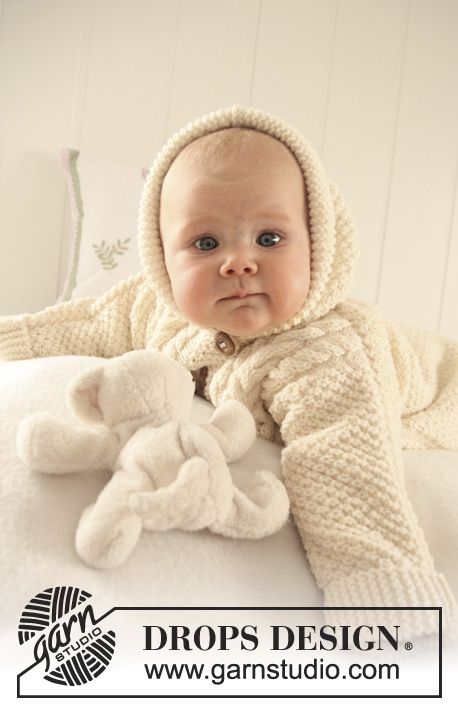 |
||||||||||||||||||
Kötött babazsák, rizs-, struktúra- és csavartmintával DROPS Merino Extra fine fonalból. DROPS design: me-042-by jelű minta
DROPS Baby 19-10 |
|||||||||||||||||||
|
BABAZSÁK: LUSTAKÖTÉS (a kötőtűn oda-vissza): Minden sorban sima szemekkel kötünk. MINTA: Lásd az M.1- M.3-as diagramot A diagram a mintát a színe oldal felől mutatja. Az M.2 és M.3 jelű minta 1. sora = SZOO. LYUK AZ AUTÓS GYERMEKÜLÉS BIZTONSÁGI ÖVÉHEZ: A babazsákot készíthetjük az elején és a hátán lyukkal a biztonsági öv átvezetéséhez. Az első lyukat a darab hátán akkor készítjük, amikor az körülbelül 16-20-23 (28-33) cm.es (vagy a kívánt méretű), a tűn levő szemek közül a középső 10-et leláncolva. A következő sorban szedjünk fel 10 új szemet a leláncolt szemek fölött, és a korábbiaknak megfelelően folytassuk a munkát. GOMBLYUKAK: A gomblyukakat a jobboldali gomboláspánton készítjük el. 1 gomblyuk= kössük össze a 2. és a 3. szemet az eleje közepénél, majd 1RH. A gomblyukakat akkor készítsük, amikor a darabunk: 1/3 hónapos méretnél: 25, 30, 35, 40, 45 és 50 cm. 6/9 hónapos méretnél: 28, 34, 41, 47, 54 és 60 cm. 12/18 hónapos méretnél: 30, 38, 46, 54, 62 és 70 cm. 2 éveseknek való méretnél: 37, 44, 51, 58, 65, 72 és 79 cm: A 3/4 éveseknek való méretnél: 40, 48, 57, 65, 74, 82 és 91 cm: -------------------------------------------------------- -------------------------------------------------------- BABAZSÁK: A babazsákot 2 részben készítjük, az alsó szélétől, felfelé haladva varrjuk össze. Mindkét részt oda-vissza kötjük körkötőtűn, hogy legyen elég hely a szemeknek. MEGJEGYZÉS: Ha szükség van lyukra a biztonsági öv elvezetésére- olvassuk el a fenti magyarázatot. HÁTA: A kezdéshez szedjünk fel 68-74-82 (86-94) szemet (ebben benne van mindkét oldalon 1 szélszem) a 4 mm vastag körkötőtűre a Merino Extra Fine fonallal. Kössünk lustakötéssel (olvassuk el a fenti magyarázatot) 4-4-4 (5-5) cm-ig, úgy, higy FO sor után fejezzük be. Kössünk 1 sort a FO felől, majd folyt az M.1 jelű mintával, és mindkét oldalon 1-1 lustakötéses szélszemmel (aszélszem mellett 1 S szemmel kezdünk). Amikor a darabunk 44-53-62 (71-82) cm, az ujjához új szemeket szedünk fel, mindkét oldalon, a köv. módon: Minden sor végén szedjünk fel szemeket a köv módon: 4 szemet 2-2-3 (3-3) alkalommal, 8 szemet 1-1-1 (1-3) alkalommal, 10 szemet 1-1-1 (2-1) alkalommal, 12-14-15 (15-16) szemet 1 alkalommal = 144-154-172 (196-218) szemünk lesz a kötőtűn. MEGJEGYZÉS: Az új szemeket az M.1 jelű mintába illesztve kötjük tovább. Amikor minden szemet felszedtünk, az M.1 jelű mintával folyt a kötést, de mindkét oldalon a szélső 10 szemet lustakötéssel kötjük (= az ujjak alsó szegélye). Amikor a darabunk 54-64-74 (84-96) cm-es láncoljuk le a középső 16-16-18-22 (24-24) szemet a nyakkivágás kialakításához és a két vállrészt / ujját külön-külön fejezzük be. Láncoljunk le 1 szemet a nyakkivágás kialakításához a köv sorban = 63-67-74 (85-96) szem marad a sorban (= vállrész + ujja). Amikor a darabunk 56-66-76 (86-98) cm-es, láncoljuk le a darabot. ismételjük meg a másik oldalon. ELEJE: A kezdéshez szedjünk fel 68-74-8286-94 szemet a kötőtűre. Kössünk lustakötéssel 2-2-2 (2.5-2.5) cm-t. A következő színe oldali sorban így kössünk: 12-13-14 (14-16) S szem, *2 szemet S összekötünk, 1 rh, 12-13-15 (12-13) S szem. * Ism a *-* közötti részt, összesen 3-3-3 (4-4) alkalommal, 2 szemet S összekötünk, 1 rh, és 12-14-15 (14-16) szemmel fejezzük be a sort (= 4-4-4 (5-5) gomblyuk). Folytassuk lustakötéssel, amíg a darabunk körülbelül 4-4-4 (5-5) cm-es, és 1 FO sor után járunk. Kössünk 1 sort fordított szemekkel a fonákoldal felől, miközben, UGYANAKKOR, egyenletesen elosztva fogyasszunk 22 szemet (minden méretben) = 90-96-104 (108-116) szem marad a kötőtűn. A következő SZO sorban így haladjunk: 1 szélszem, az M.1 jelű minta az első 5-8-12 (14-18) szemen (az oldalán 1 S szemmel kezdjünk, így illeszkedik majd a háta mintájához), az M.2 jelű minta (= 32 szem), 14 F szem, az M.3 jelű minta (= 32 szem), az M.1 jelű minta a következő 5-8-12 (14-18) szemen (a mintát úgy kössük, hogy az oldalán a szélszem mellett 1 F szemet kössünk, így illeszkedik majd a háta mintájához, és 1 szélszemmel fejezzük be. Amikor a darabunk 23-25-28 (33-37) cm-es, csúsztassuk az első 42-45-49 (51-55) szemet 1 szemtartóra = 48-51-55 (57-61) szem marad a kötőtűn. JOBB ELEJE: = 48-51-55 (57-61) szem. Folytassuk a mintával a korábbiaknak megfelelően, de az eleje közepén 6 szemen lustakörtéssel kötünk - NE FELEDKEZZÜNK MEG A GOMBLYUKAKRÓL- olvassuk el a fenti magyarázatot. Amikor a darabunk 44-53-62 (71-82) cm-es, minden sor végén szedjünk fel új szemeket az ujjához, ahogy azt a hátánál tettük = 86-91-100 (112-123) szem. Miután minden szemet felszedtünk, folytassuk a mintával a korábbiaknak megfelelően, de az ujja szélén a 10 szélső szemet lustakötéssel kötjük. Amikor 1 sor kell ahhoz, hogy a darabunk 51-61-71 (80-92) cm -es legyen (ez a sor legyen FO sor), az eleje közepénél a csav mintán fogy 4 szemet (vagyis fogy 2 szemet a csav mintán, és 1-1 szemet a csav minta mindkét oldalán. A következő színe oldali sorban először lekötjük az első 6-7-8 (9-9) szemet, majd szemtartóra csúsztatjuk őket a nyakkivágáshoz. A nyakkivágás kialakításához minden sor elején a köv módon láncoljunk le szemeket: 2 szemet 2 alkalommal, majd 1 szemet 2-2-3 (3-3) alkalommal= 70-74-81 (92-103) szem marad a sorban a vállrészhez és az ujjához. Folytassuk a mintával a korábbiaknak megfelelően. Amikor 1 sor kell ahhoz, hogy a darabunk 56-66-76 (86-98) cm-es legyen, egyenletesen elosztva fogyasszunk 7 szemet az M.3 jelű mintán = 63-67-74 (85-96) szem marad a kötőtűn. A köv sorban lazán láncoljuk le a megmaradt szemeket. BAL ELEJE: Csúsztassuk a szemtartóra félretett szemeket vissza a kötőtűre, és szedjünk fel 6 szemet a jobb gomb pánt 6 lustakötéses szeme mögött = 48-51-55 (57-61) szem. Folytassuk a jobb elejénél eírt módon, de annak tükörképeként. MEGJEGYZÉS: az eleje pánton nem készítünk gomblyukakat. ÖSSZEÁLLÍTÁS: Varrjuk össze a vállvarrásokat, és az ujjak varrásait. Varrjuk össze az ujjak alsó varrását, és folytassuk az oldalán, az 1 szélszem mellett. Hajtsunk fel 5-5 centit a két ujja alsó szélén, és néhányapró öltéssel r9gzítsük. Varrjunk 4-4-4 (5-5) gombot a zsák alsó szélén. varrjuk a megmaradt gombokat a bal eleje szélére. KAPUCNI: A színe oldal felől szedjünk fel körülbelül 58-78 szemet (az elején szemtartóra félretett szemekkel együtt) a 4 mm-es körkötőtűre a Merino Extra Fine fonallal. Kössünk 1 sort S szemekkel a FO felől, majd 1 sort S szemekkel a SZO felől. UGYANAKKOR, egyenletesen elosztva fogy annyi szemet, hogy 85-89-93 (97-101) szem maradjon a kötőtűn. Folytassuk az M.1 jelű mintával, mindkét oldalon 6 lustakötéses szemmel. UGYANAKKOR, a köv 2 sor végén szedjünk fel 6 új szemet a visszahajtott szélhez = 97-101-105 (109-113) szem. Ezeket szemek lustakötéssel kötjük. Folytassuk az M.1 jelű mintával, és 12 lustakötéses szemmel a két oldalon, amíg a kapucni 21-23-25 (27-28) cm-es. Láncoljuk le a szemeket. Hajtsuk félbe a kapucnit, és varrjunk össze a tetején. Hajtsuk a kapucni széle körül a 6 lustakötéses szemet a SZO felé, és apró öltésekkel rögzítsük a nyakkivágáshoz. |
|||||||||||||||||||
Diagram magyarázatok |
|||||||||||||||||||
|
|||||||||||||||||||

|
|||||||||||||||||||

|
|||||||||||||||||||
|
Elkészítette ezt, vagy egy másik mintánkat? Zegyen #dropsdesign taget a képekre a szoliális médiában, hogy mi is láthassuk. Segítségre van szüksége a modell elkészítéséhez? tutorial videót találhat, és egy kérdés/felelek részt, és még többet, ha a mintát megkeresi a garnstudio.com oldalán. © 1982-2024 DROPS Design A/S. Minden jog fenntartca. Ez a documentim, az összes részével védelem alatt áll. A weboldalunkon többet olvashat arról, hogy mit tehet és mit nem a mintáinkkal. |
|||||||||||||||||||
Több mint 40 év tapasztalattal a kötés és horgolásminták tervezésében a DROPS Design az ingyenes minták egyik legszélesebb körű gyűjtemnyét kínálja az Interneten, 17 nyelvre fordítva. A mai nappal 304 katalógust, 11422 mintát tudunk számon tartani a mintákból 10724 -t fordítottunk le magyarra (európai mértékegységekkel).
keményen dolgozunk azon, hogy a kötés és a horgolás világából a legjobbat hozzuk el, remek fonalakkal, hihetetlen árakon. Ha mintáinkat nemcsak személyes használatra szeretné használni, minden minta alján a Copyright szövegben olvashat arról, mit tehet s mit nem. Sikeres kézimunkázást!








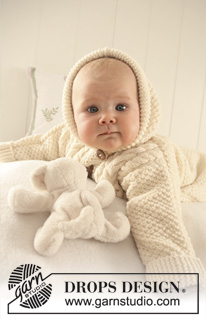




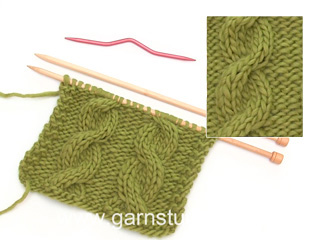


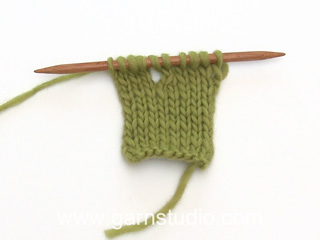

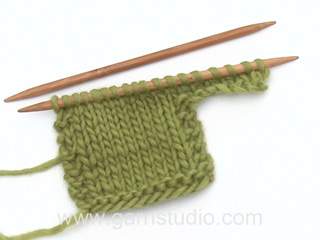
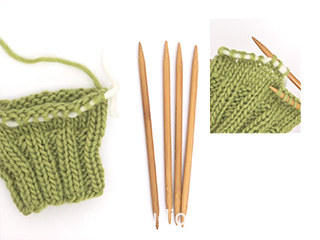

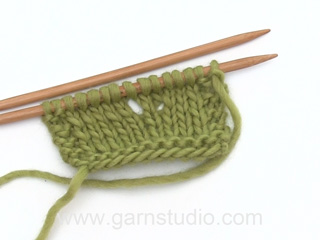
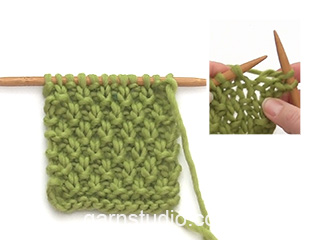






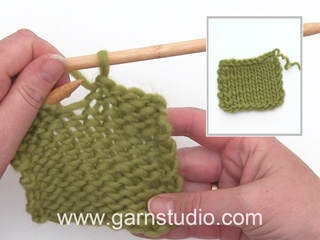

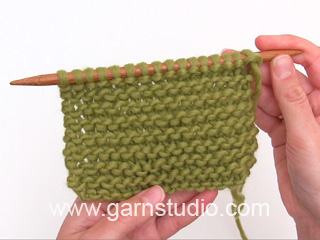

















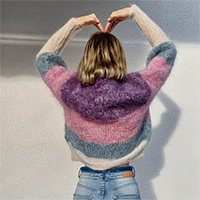



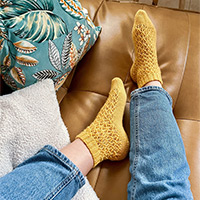
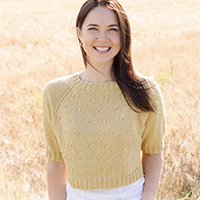
Megjegyzések / Kérdések (294)
Bonjour, je ne comprends pas comment réaliser l\'étape pour l\'encolure au côté devant? Je ne sais pas où sont ces mailles et qu\'en fait on par la suite, elles sont en attente . Ensuite où faut-il faire les diminutions?\r\nMerci de votre aide. Françoise
06.04.2024 - 19:49DROPS Design answered:
Bonjour Françoise, pour le devant droit, vous mettez en attente les 6 à 9 premières mailles en début de rang sur l'endroit, puis vous rabattez les mailles pour l'encolure en début de rang sur l'endroit comme indiqué pour la taille choisie (pour le devant gauche, mettez en attente les mailles / rabattez les mailles en début de rang sur l'envers). Lorsque vous tricoterez la capuche, vous relèverez les mailles autour de l'encolure en commençant par tricoter les mailles du devant droit en attente et en terminant par les mailles en attente du devant gauche. Bon tricot!
08.04.2024 - 09:18Regarding diagrams, are all the rows read from right to left and bottom up? What do the last two rows in M2 and M3 diagrams mean
29.03.2024 - 00:58DROPS Design answered:
Dear Nicole, diagram patterns are always showing the pattern as it would be seen from the right side of the knitted fabric. They are generally (always, unless it is otherwise explicitly stated) read from the bottom up. First row is generally from right to left. If you knit on the round subsequent rows are also read right to left. If you knit back and forth, every odd numbered row is read from right to left, every even numbered rows are read left to right. Happy Kniting.
29.03.2024 - 08:27Habe noch eine Frage - Muster M1 - ist bei dem Diagramm nur die Vorderseite gemeint? Erst in der 4. R versetzt oder nach einer Rückreihe (die Rückreihen werden ja so gestrickt wie sie erscheinen!) oder wird das große Perlmuster gestrickt (weiß ich bin ein bisschen dumm - habe aber schon lange nicht mehr gestrickt)
20.03.2024 - 14:36DROPS Design answered:
Liebe Frau Schebesta, die Diagramme zeigen alle Reihen, die Hin- sowie die Rückreihen; in diesem Video zeigen wir, wie man so ein grosses Perlmuster strickt. Viel Spaß beim Stricken!
20.03.2024 - 15:30Wird das Muster M1 nur 1mal gestrickt? In der Anleitung ist nirgends ersichtlich ob die Muster immer wiederholt werden (M1, M2 und M3....)
19.03.2024 - 16:12DROPS Design answered:
Liebe Frau Schebesta, das Diagram M.1 wird am Rückenteil bis zur Ende gestrickt. Viel Spaß beim Stricken!
20.03.2024 - 07:59Monteres den sammen på retten eller vrangen?
25.01.2024 - 15:37DROPS Design answered:
Hej Kari, de fleste monterer fra retsiden, se vores videoer som viser hvordan man kan montere :)
31.01.2024 - 10:50Hello! Sadly, the buttons seem to be out of stock, are there any alternatives you can suggest? Is it 20mm I should be looking for as an alternative? Thanks!
24.10.2023 - 14:27DROPS Design answered:
Dear Signe Arias, these buttons are still available - find them here - just ask your DROPS store when they will have some back in stock. They can also help you finding the best matching button for your project - even per mail or telephone. Happy knitting!
24.10.2023 - 17:10Do any of your bunting patterns come with crochet instructions
22.10.2023 - 19:58DROPS Design answered:
Dear Pat, all of our bunting bag patterns are knitted. Happy knitting!
23.10.2023 - 00:30M2 og M3 har mønster som ligger midt , hva betyr det?
18.10.2023 - 12:26I am wondering about the first cast off for the neck. It states to dec 4 on WS on cable. One before, 2 over and one after. How do you continue the cable pattern after this? Thank you
24.05.2023 - 14:37DROPS Design answered:
Dear Jacqui, decrease 4 stitches in the cable working for example P2 tog int he cable stitches, on next row from right side, work K over K, P over P and slip the stitches on a thread for neckline. Happy knitting!
24.05.2023 - 15:09Bonjour je ne comprend pas comment il faut faire moi je vous parle du côté gauche et vous du côté droit comment je doit monter ses 6 mailles sur le bord je suis vraiment bloqué, je ne suis pas une professionnelle merci de votre réponse passé une bonne journée
14.03.2023 - 05:35DROPS Design answered:
Bonjour Pépita, j'étais bien sur le devant gauche aussi, tricotez votre premier rang du devant gauche sur l'endroit et montez vos 6 mailles (côté milieu de l'ouvrage, derrière le devant droit) en fin de rang, ou bien si votre 1er rang du devant gauche doit être tricoté sur l'envers, montez d'abord 6 mailles, puis tricotez les mailles du devant gauche sur l'envers. Bon tricot!
14.03.2023 - 10:06